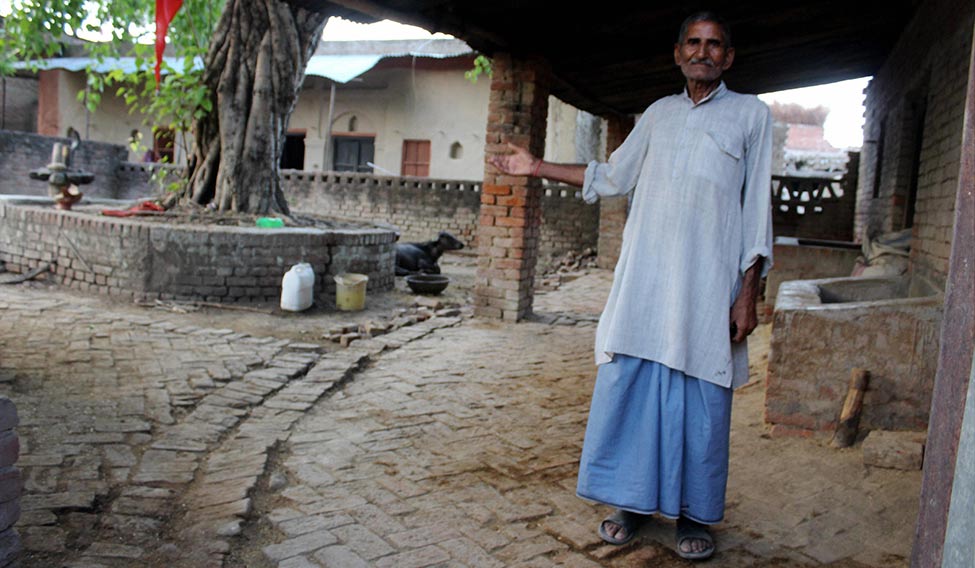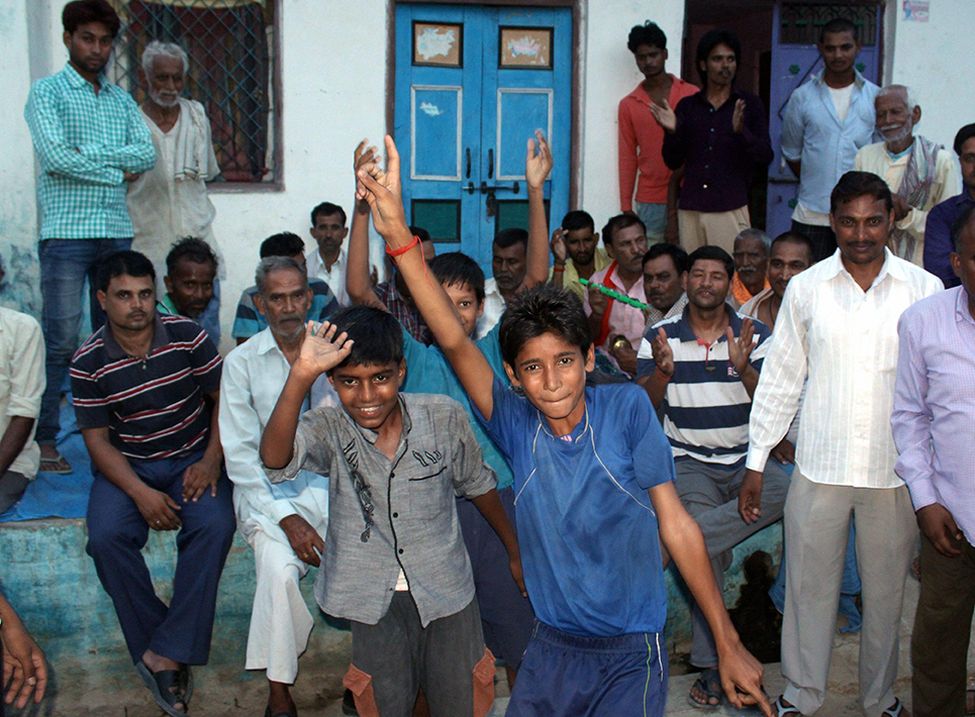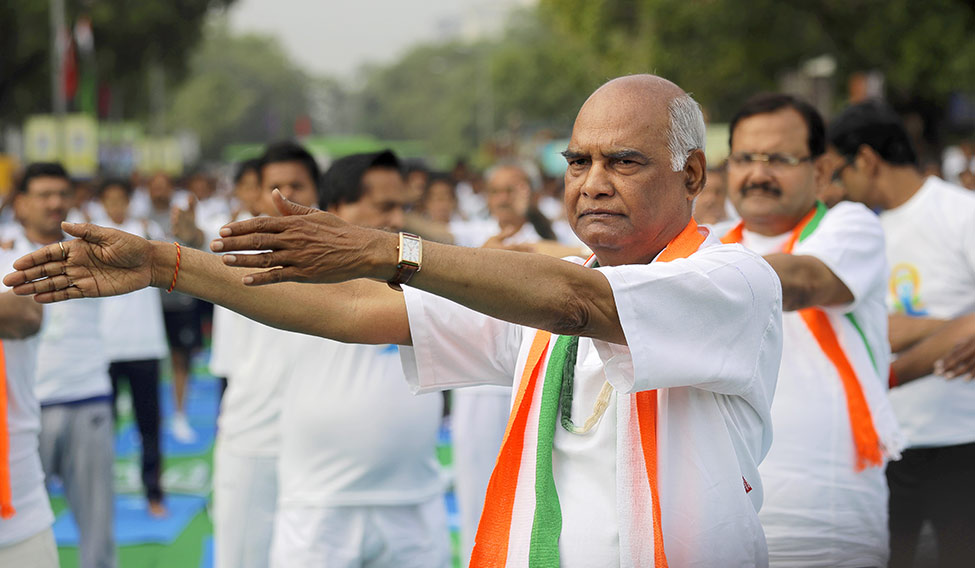For the first time in history, a BJP leader is set to move into Rashtrapati Bhavan. On June 19, the party’s highest decision-making body, the parliamentary board, picked Bihar Governor Ram Nath Kovind as its candidate for the presidential election.
A mild-mannered, modest lawyer-turned politician, Kovind, 71, has been a dalit face of the BJP. Getting the numbers to elect Kovind as India’s 14th president will not be a problem, as several parties which are not part of the BJP-led National Democratic Alliance have extended their support. In 2002, the BJP government led by Atal Bihari Vajpayee nominated missile man A.P.J. Abdul Kalam for the post, as it did not have the requisite numbers to get a party member elected.
By nominating Kovind, Prime Minister Narendra Modi and BJP president Amit Shah have sent a strong signal to the marginalised, who have been gravitating to the party in recent years. The decision has also hit the tenuous unity cobbled up by opposition parties. The non-NDA parties were pushing for an ideological contest in the presidential elections, as a way to take on the Modi government. But, opposing a dalit candidate will not be easy, as evident from initial statements by Janata Dal (United) leader Nitish Kumar and BSP leader Mayawati, both of whom have indicated that they are not opposed to Kovind.
After hindutva firebrand Yogi Adityanath’s appointment as Uttar Pradesh chief minister, Kovind’s nomination aims at stepping up the integration of dalits into the Hindu homogeneous mainstream. The RSS has put its energy and focus on accomplishing the task through its social inclusion programmes like Samajik Samrasta. There are those who also find significance in Kovind’s first name being Ram Nath, which means Lord Ram. After Kovind’s election, the Modi government would be credited with putting Ram on top, said a BJP leader.
 Paraukh’s pride: Jaswant Singh points to the location of the primary school in Paraukh, where he and Kovind studied together | PTI
Paraukh’s pride: Jaswant Singh points to the location of the primary school in Paraukh, where he and Kovind studied together | PTI
Kovind’s name was announced after some deft moves by Shah. First, a three-member panel, comprising Union Ministers Rajnath Singh, Arun Jaitley and Venkaiah Naidu, was set up to engage with all political parties to build consensus. Shah even advanced the BJP’s parliamentary board meeting by a day. On June 19, eleven members of the board sat around the horseshoe table in room number 40 of the party headquarters at 11 Ashoka Road. Rajnath could not attend, as he had fractured his leg a day earlier.
The members were briefed about the efforts made to reach out to opposition leaders. The names of probable candidates were also spelt out. Modi reportedly said he would not be able to spare any of his cabinet colleagues for the top job. “Even we were not aware of Kovind’s name till Shah mentioned it,” said a member who took part in the meeting.
After the 40-minute meeting, members went to Shah’s room, from where Modi called opposition party leaders and chief ministers, including Sonia Gandhi and Manmohan Singh of the Congress, Nitish Kumar of the JD(U) and Naveen Patnaik of the Biju Janata Dal, apprising them of the BJP’s choice and requesting their support.
Later, during a hurriedly called press conference, Shah made the decision public. “He always worked for dalits and the downtrodden,” said Shah. Modi, too, endorsed the decision. “Kovind, a farmer’s son, comes from a humble background,” he said. “I am sure he will make an exceptional president and continue to be a strong voice for the poor, downtrodden and marginalised.”
 Villagers celebrate after Kovind was declared as the NDA’s presidential candidate | PTI
Villagers celebrate after Kovind was declared as the NDA’s presidential candidate | PTI
The secrecy over choosing the presidential candidate was typical of Shah. Three weeks earlier, though, he had dropped a hint. “It may not be any of the names being circulated in the media,” Shah had said.
Some were dismissive of the BJP’s presidential candidate. “I have never heard his name,” said West Bengal Chief Minister Mamata Banerjee. Congress leaders questioned Kovind’s contribution to the dalit cause.
Three chief ministers, however, were quick to approve of the choice. Nitish acknowledged Kovind’s dignified conduct as Bihar governor. Patnaik, who faces a resurgent BJP in Odisha, came out with a letter of support, as did Telangana Chief Minister K. Chandrashekar Rao. The BJP’s recalcitrant partner Shiv Sena, too, announced its support within a day. It means Kovind will sail through the election.
Born on October 1, 1945, in Paraukh village near Kanpur in Uttar Pradesh, Ram Nath is the youngest of five sons. He also has two sisters. As his mother died when Kovind was young, his sisters practically raised him. His father, Maikulal, wore many hats: he was a farmer and priest, and even ran a grocery store. After Kovind became a Rajya Sabha member in 1994, he used the funds allocated to him under the local area development scheme to convert his ancestral house into a milan ghar (a rest house used for weddings), named after his father. He is a keen supporter of events and initiatives related to education and religion. His elder brother, Pyarelal, continues to run a grocery store in the village.
Kovind did his schooling in his village and neighbouring town before he moved to Kanpur. He attended D.A.V. College for his BCom and LLB. Even as he practised law, he began preparing for civil service exams. He cleared the exams in his third attempt, but dropped out, apparently because he was not allotted the service of his choice. In 1977, he met prime minister Morarji Desai, who appointed him as his executive assistant. Kovind has known Modi since 1977, when he was assisting Desai, said Prabhat Jha, MP.
Kovind also served as the Union government’s counsel in the Delhi High Court from 1977 to 1979, and was its standing counsel in the Supreme Court from 1980 to 1993. He became advocate-on-record of the Supreme Court in 1978. His practice in the Delhi High Court and the Supreme Court lasted 16 years, till 1993.
Kovind is not a member of the RSS, but is known to be closely associated with its work. He joined the BJP in 1991, when he was 46 and Murli Manohar Joshi was party president. He soon got a ticket to contest from Ghatampur, a Lok Sabha seat reserved for dalits, but he lost the election. He also lost the assembly election from Bhognipur in 2007.
In 1994, Kalyan Singh, then leader of opposition in Uttar Pradesh, helped Kovind get elected to the Rajya Sabha. Kovind got his second term in 2000. In his 12-year tenure, he asked 283 questions. Interestingly, all but 12 questions were asked during his first term.
What made Modi and Shah pick Kovind was his performance as the party’s Dalit Morcha president from 1998 to 2002. Before that, Kovind had been general secretary and president of Akhil Bharatiya Koli Samaj, an organisation devoted to the community to which he belongs. Traditionally, Kolis, also known as Koris, were weavers but with the invasion of machines, most of them have moved to other professions. In UP and Uttarakhand, the community is listed as scheduled caste, while in Gujarat, Rajasthan and Maharashtra, it belongs to the Other Backward Classes.
Among Kovind’s political associates is Ramakant Dixit, an RSS activist. “He used to visit shakhas often,” said Dixit, who is now principal of Saraswati Gyan Mandir Inter College, which is known to be close to the RSS, in Azadnagar. “When he was MP, we would help him with the list of Sangh activists who needed help from his MP quota, as telephones and gas connections were not easily available at that time.”
P.N. Dixit, a friend who has known Kovind since 1994, told THE WEEK: “He had rented our two-room house and was friendly with my elder brother A.N. Dixit, who retired as physics professor at Christ Church College, Kanpur. He used our house as his office and residence when he was MP. [When he completed his term], he did not have a car, so we used to send him ours. Last May, he invited me to Raj Bhawan in Patna, where he looked after us.”
Kovind and his wife, Savita, have two children: Prashant Kumar and Swati. The couple, who were married on May 30, 1974, recently went to Mashobra in Himachal Pradesh to celebrate their 43rd wedding anniversary. During sightseeing, they wandered into the premises of the Retreat Building, the president’s summer palace. Kovind was denied entry, as he did not have the requisite permission to visit the palace.
Barely a month later, he seems all set to move into the majestic mansion in the heart of New Delhi. The Retreat Building, too, lies in wait.







